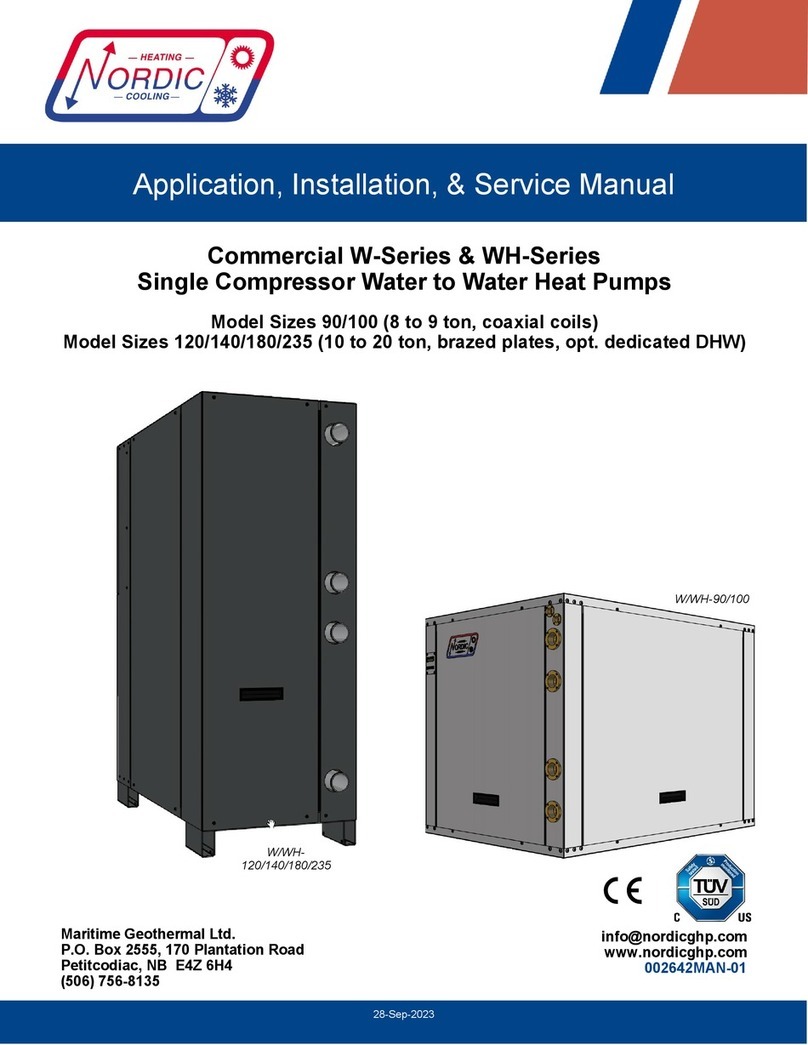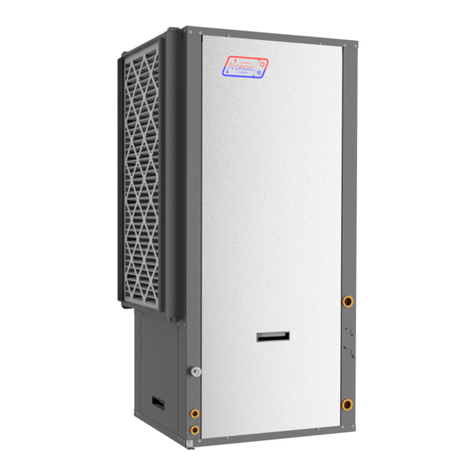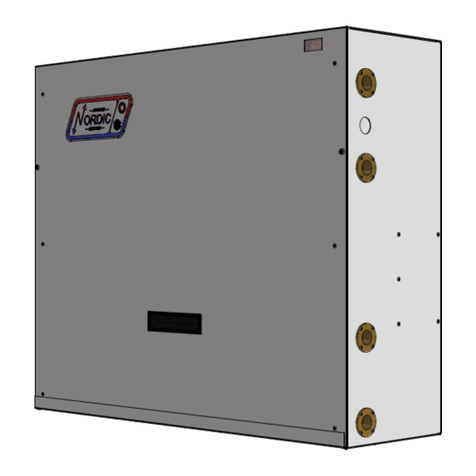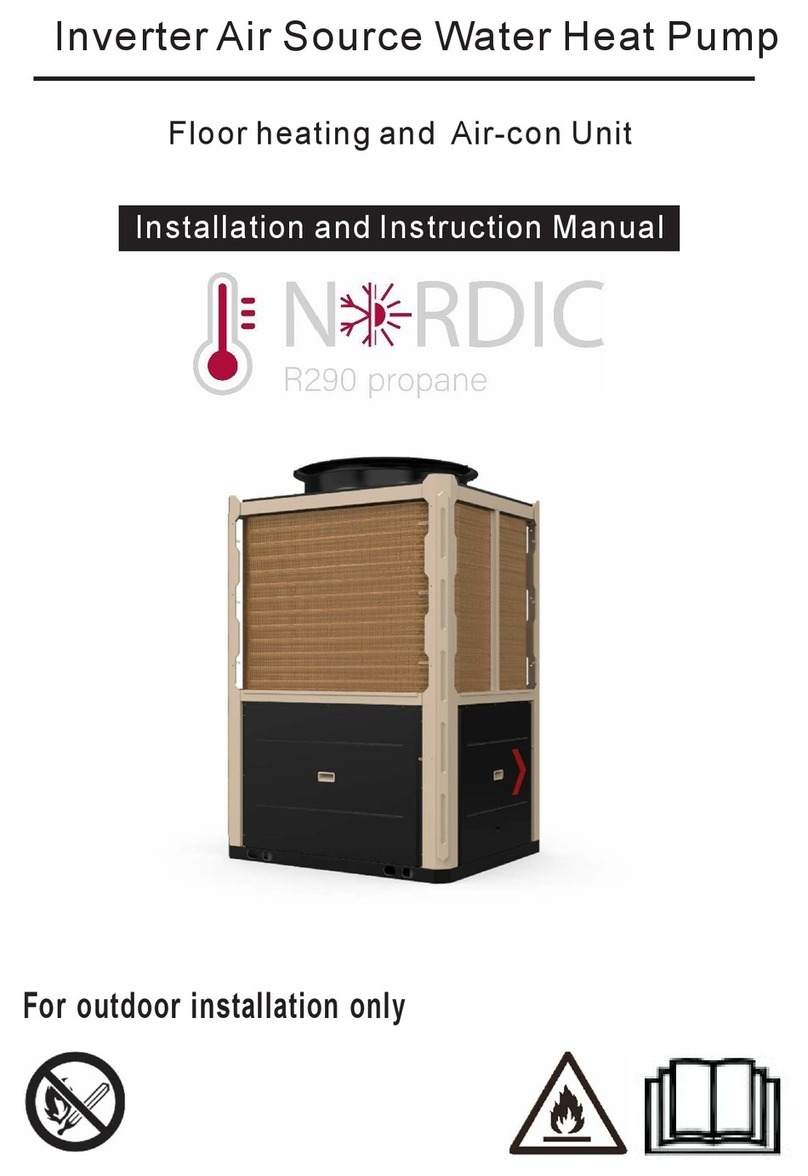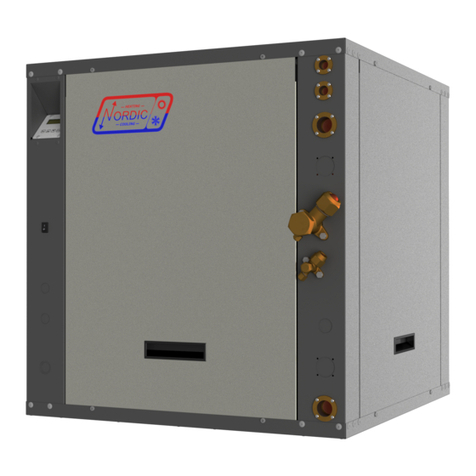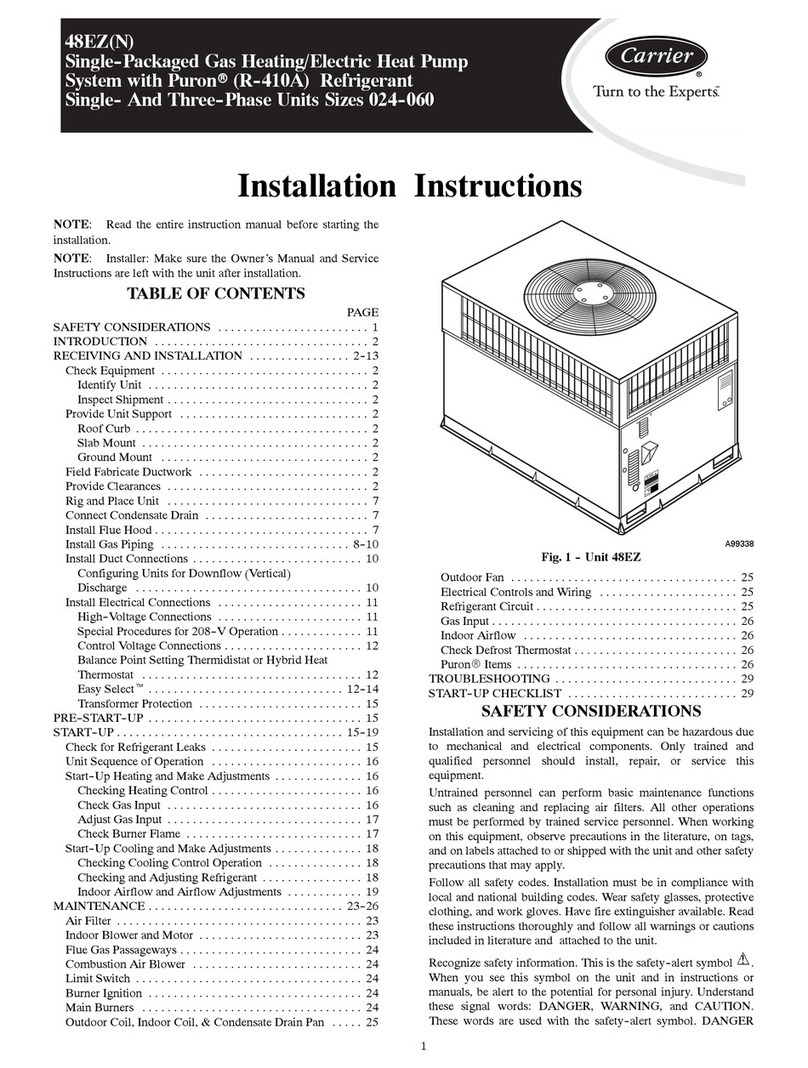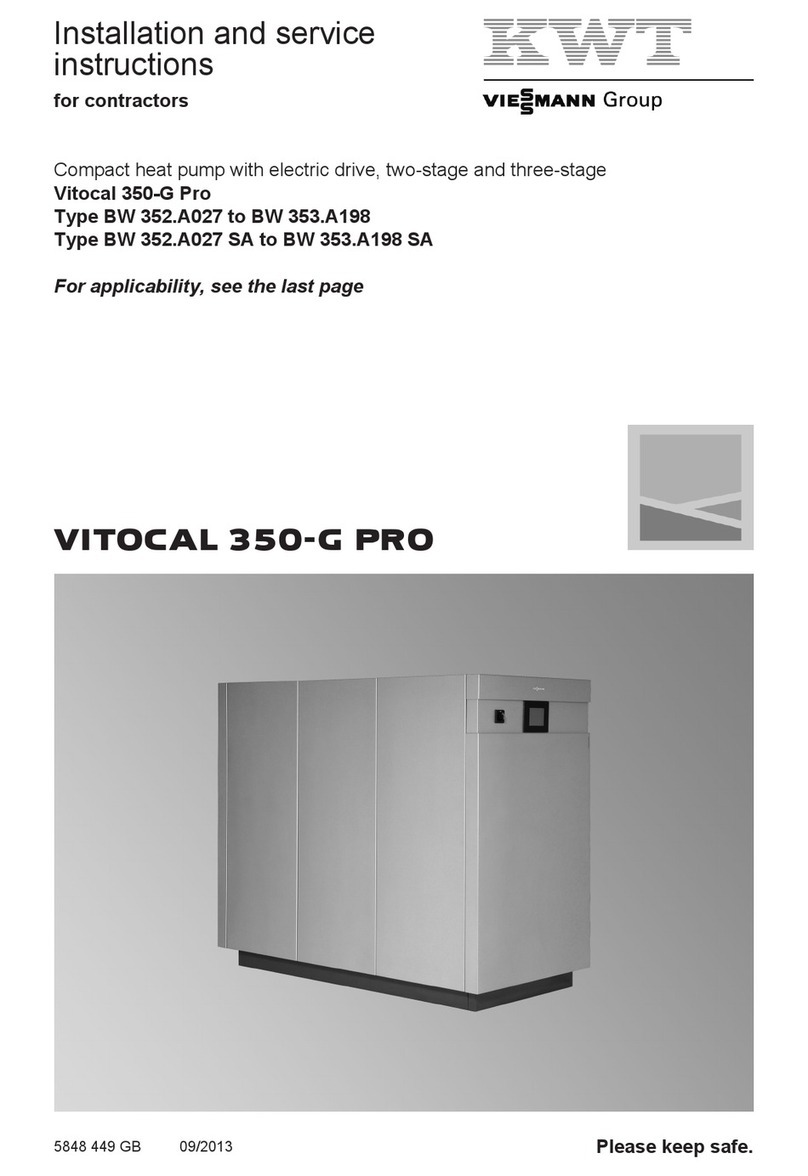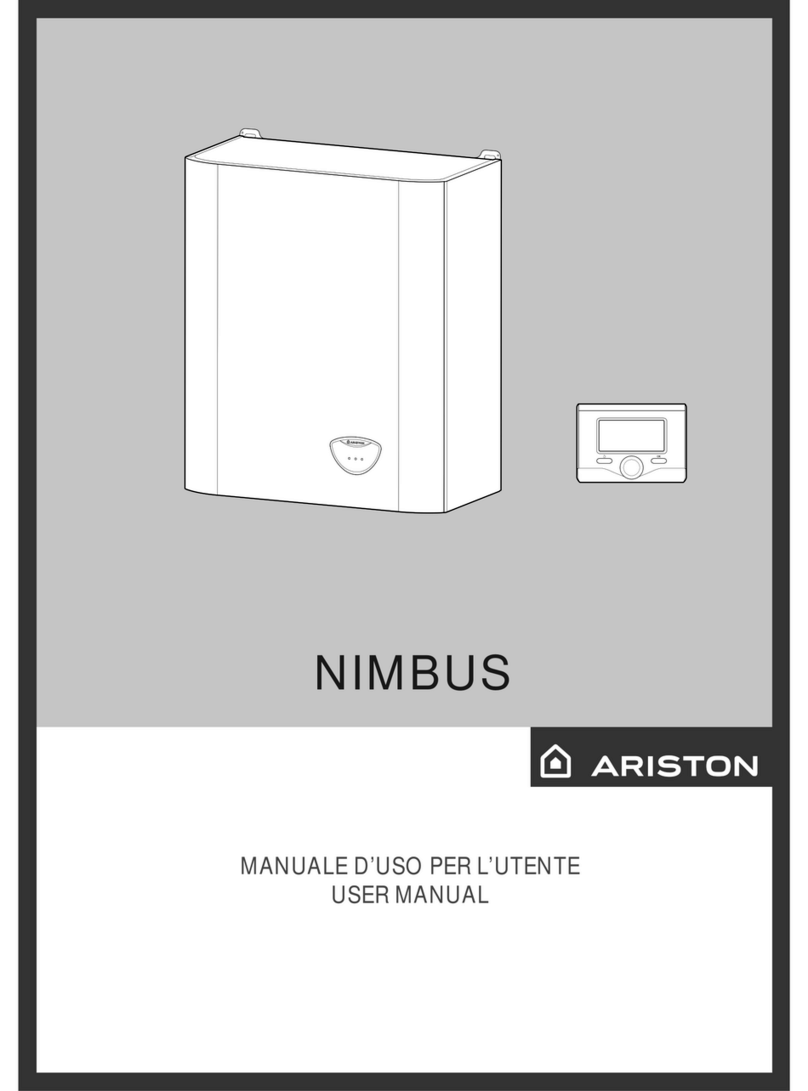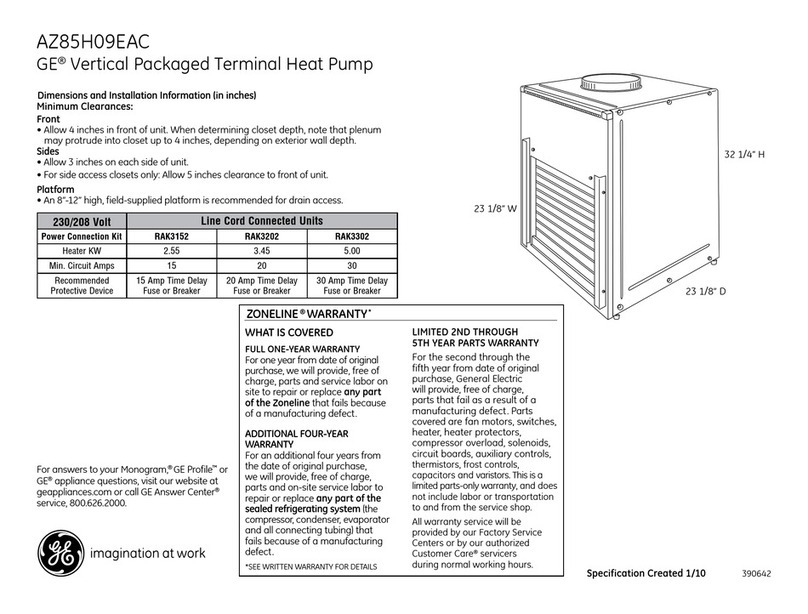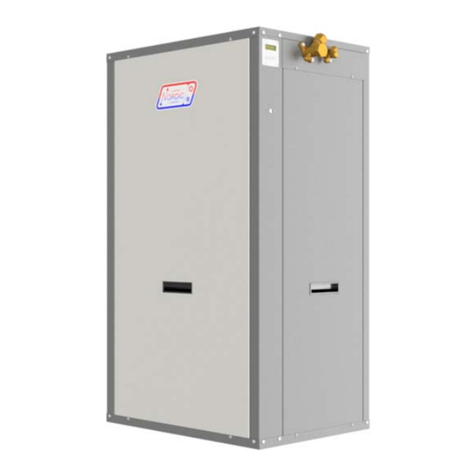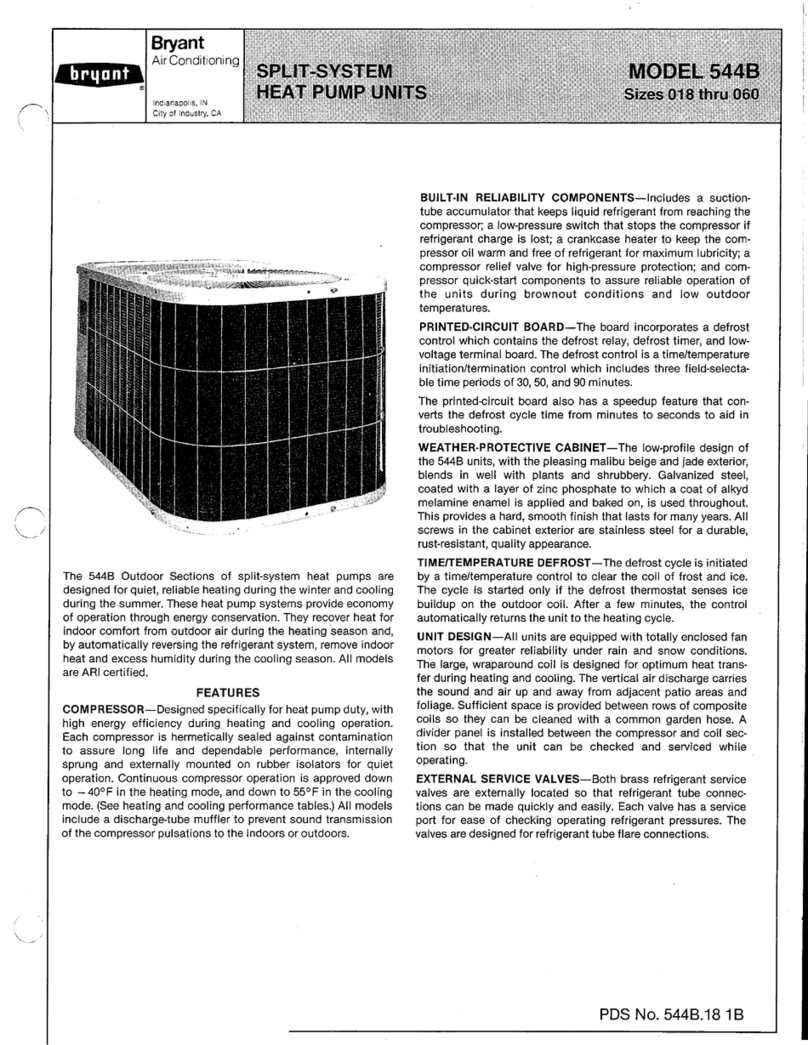
1-Apr-2021 Page 10 002507MAN-01
Control Requirements
Since an aquastat is built into the heat pump, no external
controls are normally required. The aquastat comes with a
probe with 96” (8 ft / 2.4 m) of wire, which should be extended
through the knockout on the right side of the cabinet and placed
in a dry well near the top of the buffer tank. If a dry well is not
available, it may be possible to fix the probe to the tank inside
the insulation.
The internal aquastat is capable of controlling both heating
and cooling mode operation (operating both compressor and
reversing valve), with a manual switchover required between
heating and cooling modes.
Alternatively, an accessory external aquastat or other con-
troller with dry contacts may be used, but to control cooling
mode only. This would be necessary if the heat pump needs to
switch into cooling mode automatically, when a zone controller
or a network of room thermostats and relays demand a switch-
over. Two connections are required, as outlined in the below
table. Note that, if used, the OEXT signal (which turns off the on-
board heating aquastat) must be present during cooling season
even when there is no cooling demand. This is to avoid repeat-
ed heating and cooling of the buffer tank on demand cycling,
causing high electricity consumption.
Manual Cooling Mode Switchover
When using just the built-in aquastat, all that is required to
switch to cooling mode is to lower the F1 setpoint temperature,
by following the procedure outlined below and also on the sche-
matic (wiring) diagram on the electrical box cover.
Auxiliary Heat
The heat pump has built in dry contacts D1-D2, to acti-
vate auxiliary heat. This will most often be electric elements in
the buffer tank. D1-D2 contacts will close with an adjustable
delay after compressor starts. Use the blue knob on the timer in
the electrical box to adjust this delay from 0 to 2 hours.
Devices with their own 24vac transformer and a digital
controller (for example, the AltSource tanks available from Mari-
time Geothermal Ltd. as an accessory) will be directly activated
by the D1-D2 dry contact. Be sure to set up the AltSource
tank according to a following page, so that its temperature limit-
er remains effective. This is necessary because D1-D2 default
to ON when the heat pump is off or inoperative, so that backup
heat remains in effect.
Devices without their own transformer can have their con-
tactor activated with a 24vac signal through D1-D2, using the
wiring on the following page. Note that some external tempera-
ture limiter must remain in effect since D1-D2 defaults to
ON when heat pump is OFF.
TABLE 6 - Control Signal Description
Signal Description
C 24VAC Common (Ground)
R 24VAC Hot
YC(EXT) Cooling demand
from optional external controller
O(EXT)
Cooling mode active, from optional external
controller (turns off internal aquastat, must be
active for all of cooling season)
D1
D2
Dry contacts to activate auxiliary heat
(Contacts closed during compressor operation, but
with adjustable 0-2 hour delay)
TABLE 8 - Typical Aquastat Setpoints
HEATING °F °C
Setpoint 108 42
Differential 10 5
Activation * 98 37
COOLING °F °C
Setpoint 45 7
Differential (same) 10 5
Activation * 55 12
Internal Aquastat Operation
In normal operating mode, the aquastat displays the cur-
rent buffer tank temperature, and this display is visible from out-
side the unit with cover on. The value will vary slightly, and will
reflect the water temperature wherever the probe is placed, ide-
ally near the top of the buffer tank in a dry well.
To make adjustments, remove the cover of the unit.
Press the UP arrow to check the water setpoint tempera-
ture.
Press the DOWN arrow to check the temperature differen-
tial. (The heat pump will come on when the water tempera-
ture falls below the setpoint by the differential, and will heat
the tank back up to the setpoint.)
To change settings, press and hold the S button for 3 sec-
onds. Use the arrow keys to select setting F1-F6 (see be-
low table). Press S to display current value. To change
that value, press and hold S while simultaneously pressing
an arrow key. Press to save the setting and return to
normal display.
Note that when the ON/OFF switch is in the OFF position, or an
external cooling controller is connected and active, the internal
aquastat display will be inoperative and its display will turn off.
Settings will be retained.
TABLE 7 - Internal Aquastat Settings
F1 Setpoint temperature (degrees)
F2 Temperature differential (degrees)
F5 °F / °C
F6 High temperature alarm ON/OFF (not used)
F4 Temperature calibration value (degrees)
F3 Compressor delay time (minutes)
Heating setpoint should not exceed 120°F (49°C); cooling
setpoint should not be set below 43°F (6°C). Setpoints outside
these limits will cause the heat pump operating pressures to
approach the safety control settings, possibly causing nuisance
shutdowns.
If only pipe-in-concrete floor zones are being heated, it
is highly recommended to lower each of the heating set-
points by 10°F (6°C) for increased efficiency.


